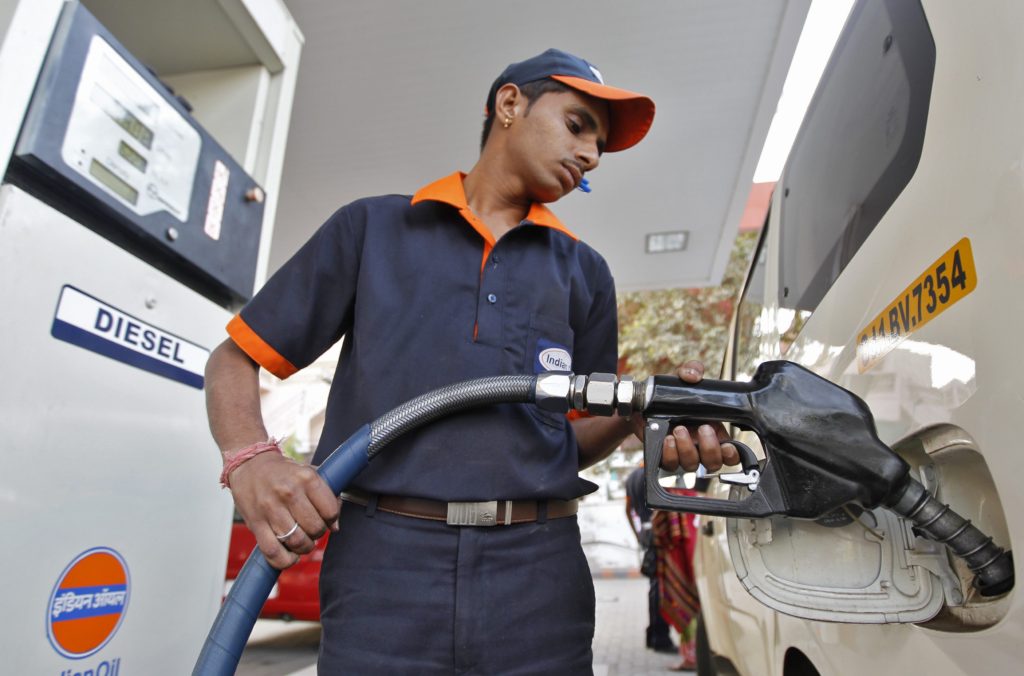Diesel Dominates India
 Diesel is big business internationally. The vast majority of places outside of the United States continue to use diesel in passenger vehicles nearly as much as gasoline based engines. Despite recent emission scandals with Volkswagen and Fiat Chrysler sales continue to rise across the world.
Diesel is big business internationally. The vast majority of places outside of the United States continue to use diesel in passenger vehicles nearly as much as gasoline based engines. Despite recent emission scandals with Volkswagen and Fiat Chrysler sales continue to rise across the world.
In India more than 50% of all passenger vehicles run on diesel fuel except entry level mini cars and hatchbacks. The diesel share of hatchback market dropped from 46% to 34% in 2016 as more first time auto buyers enter the India market. The only industry segment where diesel powered vehicles are less than 30% of market share is the entry level mini car or “auto-rickshaw”. In many developing countries mini cars, auto rickshaws, tuk-tuks and mototaxis are the primary way to get around densely packed urban centers.
India was once known as a high polluted and riddled with smog. In 1998 the Supreme Court of India ordered the Government of Delhi to implement Clean Natural Gas or Liquid Propane fuel for all busses and government vehicles. The ruling also made provisions for lowering the Sulfur content in diesel fuel to 0.50% and then to 0.05%, banning leaded fuels, requiring the use of catalytic converters, mandating pre-mix of 2T oil for lubrication in all motors, phasing out older polluting vehicles, lowering the benzene content in fuels and ensuring the all new vehicles meet the Euro-II Pollution Standards of 2000. As more cars enter the market it is important to produce vehicles that are clean and fuel efficient.
Initially many auto-rickshaw drivers had to wait in long lines to get CNG but fueling stations adapted as time passed. Eventually many state governments in India passed similar laws and air pollution began to improve. Certain local and state governments have banned or are in the process of phasing out older two-stroke engines in favor of four-stroke ones. The typical gas powered auto-rickshaw gets around 82 miles per gallon. The newest entry level cars include models such as the Maruti Alto, Maruti WagonR, Renault Kwid and the Tata Tiago.
pollution began to improve. Certain local and state governments have banned or are in the process of phasing out older two-stroke engines in favor of four-stroke ones. The typical gas powered auto-rickshaw gets around 82 miles per gallon. The newest entry level cars include models such as the Maruti Alto, Maruti WagonR, Renault Kwid and the Tata Tiago.
Every other market segment diesel, minus the mini car, continues to be dominated by diesel. From 2015-2016 diesel engines outsold gasoline powered vehicles by 3%-4%. In higher price point segments the dominance of diesel have been astronomical. The vast majority of expensive priced cars are diesel. The popularity of diesel in SUVs and MPVs is due to the fuel economy. Customers who own larger vehicles in India usually live outside of urban centers and travel long distances. It makes practical sense to save money on fuel costs. The initial cost of a diesel powered vehicle is more expensive however the fuel savings over the lifetime of the vehicle is significant over gasoline powered vehicles.
The entry level mini car and hatchback segments price points are dramatically cheaper than diesel powered vehicles. The consumer demographic is more price conscience and tend to live in large urban centers. These people are usually first time car buyers. It makes sense that these smaller vehicles use gasoline vs. diesel as the distances traveled are on a daily basis are much less than those who live outside of the city and commute. A tiny rickshaw or mini car ca n still get 60-90 mpg which is more than enough to meet the needs of this market segment.
n still get 60-90 mpg which is more than enough to meet the needs of this market segment.
The midsized sedan market, like the luxury SUV market, is dominated by diesel. Estimates indicate that lower end sedans compromise 56% of the market share while higher end sedans compromise 66%. These types of vehicles include the Hyundai Xcent, Honda Civic, Hyundai Elantra, Toyota Corolla and the Honda Amaze.
The highest end of luxury vehicles (MPVs and SUVs) like the Infinity Q5, BMW X3 and the Mercedes M Class are almost 100% diesel. Premium SUVs like the Rexton, Endeavour, Fortuner and the SantaFe are nearly 96% diesel.
The country of India is the only other mass market, other than Europe, where diesel has a substantial presence other than gasoline. In December of 2015 Delhi announced a diesel ban on diesel engines 2 liter and larger within the city skipping the 4 year phasing out period. In August of 2016 the ban was lifted and an agreed 1% tax on diesel vehicles was imposed instead amid pressure from automakers Toyota and Mahindra. PriceWaterhouseCoopers stated that the price variant between diesel and gasoline is (Rs)1 Lakh higher. Only time will tell if diesel or gasoline will dominate India.




